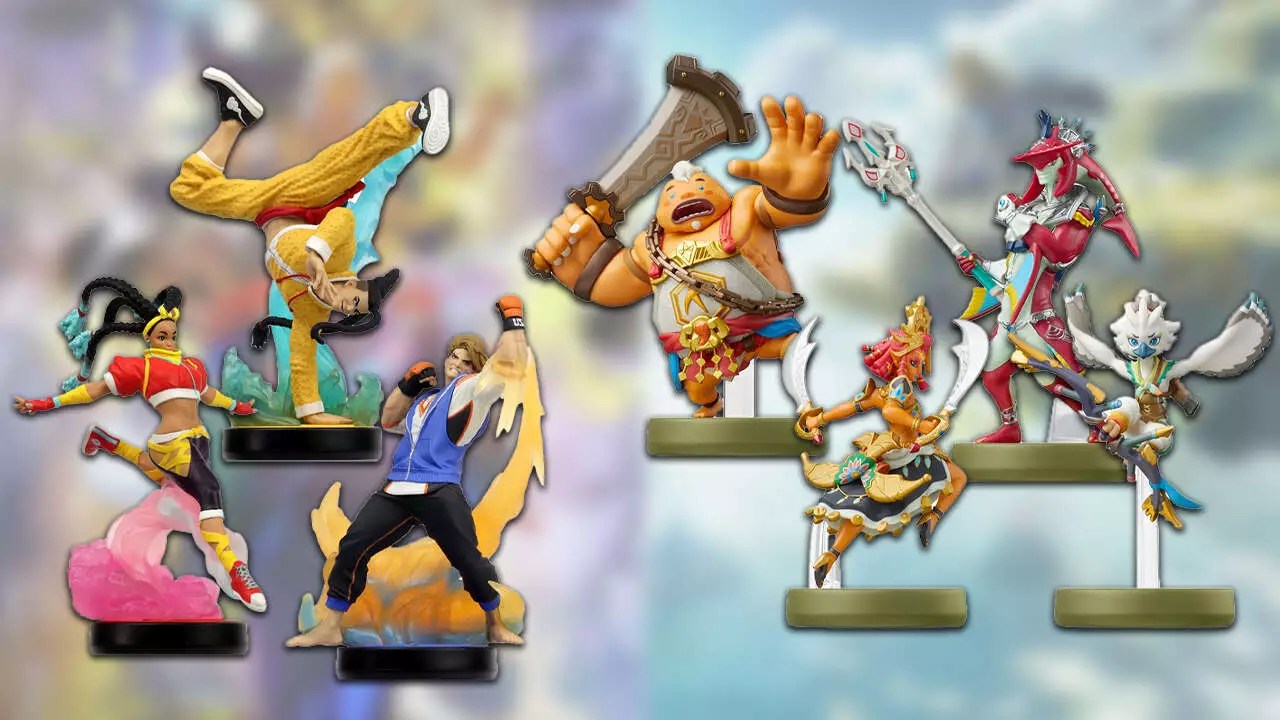In a world where gaming accessories are becoming as integral to the experience as the games themselves, Nintendo has made headlines by increasing the prices of first-party Switch 2 accessories. Amid this wave of financial adjustments, the much-anticipated Amiibo figures from The Legend of Zelda and Street Fighter franchises have also experienced an unexpected price surge. Initially, fans assumed that the Amiibo associated with these iconic games would retain their previously announced prices, which were already on the higher end of the spectrum for such collectibles. However, with the recent updates from major retailers like Walmart and GameStop, it has become evident that these cherished figures are now receiving the most significant price hikes, calling into question the value of gaming memorabilia in today’s market.
A Closer Look at the Price Increase
To understand the magnitude of this price rise, let’s dissect the details. The new Amiibo figures, set to launch alongside the Switch 2 on June 5, are now priced a staggering $10 above their initial figures, bringing their average cost to around $30 each. This noticeable increase stands as one of the highest among Nintendo accessories. For comparison, the Switch 2 Dock Set has only increased from $110 to $120—a measly $10 hike for a consumer looking to add a second dock. Yet, when viewed as a percentage increase, the hill for Amiibo figures looks steeper and more daunting.
Fans of The Legend of Zelda franchise have grown accustomed to varying price points, with standard figures usually around $16 and premium ones such as the Ganondorf Amiibo priced at $20. However, the new release of Street Fighter 6 Amiibo figures has crossed into territory that many might label as exorbitant—with prices reaching an astonishing $40 apiece. Breaking down these costs reveals a staggering reality: you’re only $20 away from the game itself, which even includes free downloadable content (DLC).
The Value Proposition of Gaming Collectibles
The dramatic increase begs the question: are these Amiibo figures worth the extra dollars? On one hand, collectors have long found value in nostalgic items that bolster their gaming experience. Amiibo provide unique in-game functionalities, manifests as exclusive bonuses or special fabric for in-game items, making them more than just trinkets. For example, the amiibo of Tulin for Tears of the Kingdom grants players in-game extras that potentially enhance gameplay.
Yet, while nostalgia and fandom fuel demand for these items, the substantial price increases may discourage casual gamers or collectors from biting the bullet. Many collectors remember obtaining earlier iterations of Amiibo for much less money, only to witness this skyrocketing trend rob them of opportunities to expand their collections affordably.
Comparative Economics: What Does the Market Say?
Next, we must consider how this applies in a broader economic context. The market for collectibles, especially in the gaming sphere, is rife with speculation, and large companies can often manipulate these values to their benefit. Just last year, the Pokemon TCG prices surged amid FOMO (fear of missing out), creating a frenzy around relatively simple cards from an expansive catalog. Similar trends could be seen occurring within the Amiibo market, where increased prices could lead to artificially inflated market values driven by scarcity and fan emotion.
The question remains whether this trend is sustainable. If gaming collectibles shift towards higher price points, will they alienate a significant portion of the audience? Or will the devoted fan base simply adjust their spending habits to accommodate these new price structures?
As Nintendo prepares for the launch of its next-generation console, the price adjustments of its associated products reflect broader market trends that resonate with consumers. The decision to hike these prices—particularly on nostalgic figures like Amiibo—reveals a potentially treacherous path for the gaming giant and its enthusiasts alike. As collectors weigh the benefits against their rising costs, one thing remains clear: the gaming landscape is shifting, and only time will tell what that means for the future of beloved gaming paraphernalia. How long will fans continue to pay a premium for nostalgia, and will next-generation gaming accessories evolve to justify their value in the long run? The anticipation continues to build, but along with it, so does the apprehension about what awaits the avid gamer and collector.


Leave a Reply